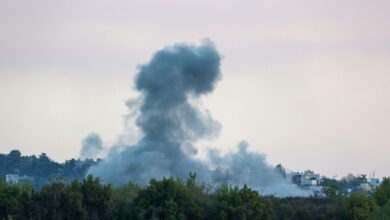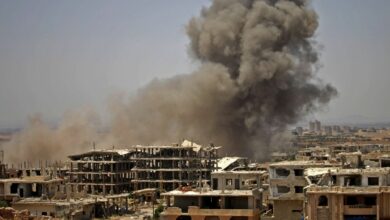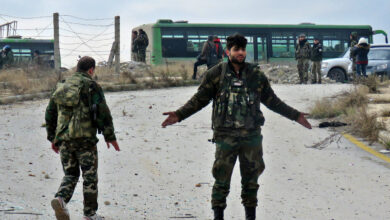Turkey, US agree on northern Syria buffer zone airspace control, Akar says
The United States and Turkey have agreed on airspace control over a planned buffer zone along Syria’s border with Turkey, Defense Minister Hulusi Akar said on Friday, Turkey’s state-run Anadolu News agency reported.
Akar did not specify who will control the buffer zone’s airspace, but noted that Turkish unmanned aircraft have already begun flights over the area.
Turkish and U.S. officials reached a preliminary deal on August 7 to establish the security zone to manage tensions between Turkey and the Coalition-backed Syrian Democratic Forces in war-torn Syria.
Akar’s August 16 announcement comes one day after SDF commander Mazlum Abdi said his side had agreed to just how far the border zone should extend into Syrian territory but would not accept Turkish airspace control or troop presence on the ground.
“We would never accept it. There is no need for that anyway. The areas designated as ‘safe zone’ are already visible for Turkish reconnaissance aircraft,” Mazlum told ANHA, which is close to the People’s Protection Units (YPG).
Mazlum has also said his side has agreed to withdraw the YPG and its female component, the YPJ, from the border area.
While the U.S. has been mum on details, Turkish officials say the two sides will conduct joint patrols.
A joint U.S.-Turkish operations center to oversee the buffer zone’s establishment will be fully operational in the southeastern Turkish city of Sanliurfa next week, Akar also said, according to Anadolu.
Turkey’s defense chief spoke while visiting Sanliurfa along with Chief of General Staff Yasar Guler and other security officials.
Ankara has been threatening for months to launch a unilateral incursion into northern Syria to clear the border area of the YPG, unseat affiliated political figures and resettle Syrian refugees currently living in Turkey.
The SDF has said it would allow a return of refugees originally from northeast Syria, but anyone suspected of affiliation with jihadist groups must first stand trial.
A significant number of U.S. Special Operations Forces, alongside some British and French troops, remain in Syria’s northeast, where they have trained and advised the YPG-led SDF in the ground war against Islamic State.
Turkey considers the predominantly Kurdish YPG to be the Syrian branch of the Kurdistan Workers’ Party, or PKK, a Kurdish nationalist group that has waged a decades-long insurgency in Turkey and is designated a terrorist group by Ankara, the United States and the European Union.
On Thursday, Mazlum cast doubt on reports that the border zone would first be established in a limited area between Tal Abyad (Girê Spî) and Ras al-Ayn (Serêkaniyê), a central section of the Syria-Turkey border.
Any agreement should cover the entirety of northeast Syria’s border with Turkey, Mazlum told ANHA on Thursday.
“The entire area is 5 km deep, but in some areas between Serêkaniyê and Tel- Abyad, the area is 9 km deep and in very small areas the depth increases to 14 km between Serêkaniyê and Tel- Abyad,” Mazlum said.
Abdi has also said local forces would maintain security in coordination with U.S.-led Coalition troops as the YPG withdraws from the border.
He stated in June that some 30,000 SDF fighters would serve as “border guards” amid the establishment of several new local military councils across Syria’s northeast.
In December, U.S. President Donald Trump announced all American forces would withdraw from Syria just days after speaking to Erdogan by phone, sending American officials scrambling to buy time from the president in order to negotiate a deal to preserve the SDF.
Erdogan and Trump discussed setting up a safe zone along the border in January, and in February the American president reportedly approved a residual force of several hundred U.S. forces in Syria.












